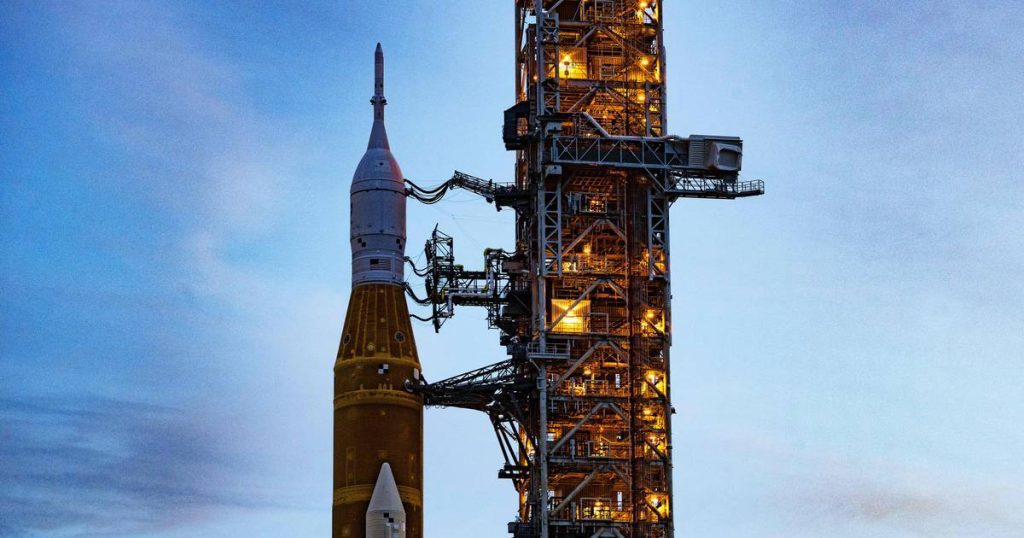ModernizationNASA is still planning to launch the SLS moon rocket on Wednesday, November 16, after inspections showed that Hurricane Nicole’s passage through Florida caused only minor damage. NASA announced this on Friday. The launch has been repeatedly delayed.
“Nothing stands in the way of launching on that date,” she told a news conference. The space agency team has also been able to reach the launch pad again since Thursday.
As part of the US’s new Artemis lunar program, the powerful SLS launch vehicle aims to launch an unmanned Orion capsule to the moon as a test run. The launch is scheduled for Wednesday, November 16 at 1:04 a.m. local time (7:04 a.m. Belgian time).
If necessary, there are two backup dates, which are November 19 and 25. “Right now we’re targeting the 16th, and if we get stuck with something we find during start-up or testing, we should consider the 19th,” NASA said.
Back to the moon
The United States wants to take humans to the moon and back in a few years, for the first time since 1972. The most powerful rocket ever built, the Space Launch System (SLS), is built for just that. At the top of this launcher is the new craft that must go to the moon and back: Orion. As an exercise, the spacecraft without people on board has to make the difficult crossing. That trip and back takes about a month and a half.
The launch of the still-unmanned Artemis I mission has already been delayed three times. The first time, at the end of August, one of the four rocket engines failed to reach the proper temperature. Before the second attempt, in September, NASA discovered a leak when the fuel tank was filled with liquid hydrogen. It turned out that the problem could not be solved in time.
For the third time, in late September, the launch was canceled due to severe Hurricane Ian. To protect against a hurricane, the launch vehicle was moved to a hangar at the Kennedy Space Center, the historic space base near Cape Canaveral.
Final rehearsal
After launch from the Kennedy Space Center in Cape Canaveral, the spacecraft is scheduled to orbit Earth for about an hour and a half, then accelerate and begin to cross the Moon. After five to six weeks, it should return to land with a splash of water in the Pacific Ocean.
By 2024, four astronauts must fly around the moon and back, with the Artemis II mission. As soon as 2025, with the Artemis III mission, humans should set foot on the moon again.
On flights to the moon and back, astronauts sit at the front, in an American section. The rear, which provides power and propulsion, was developed by Europe. Solar panels that generate electricity, for example, come from Leiden in the Netherlands.
a look. Gas leaked from the Artemis moon rocket, canceling the launch in time
Unlimited free access to Showbytes? And that can!
Log in or create an account and never miss any of the stars.

“Creator. Award-winning problem solver. Music evangelist. Incurable introvert.”







More Stories
British military spy satellite launched – Business AM
Alarming decline in the Caspian Sea
Lithuania begins construction of military base for German forces